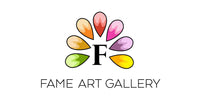Eugene Fromentin
Eugene Fromentin – A beautiful french writer and painter
Introduction
Eugene Fromentin was born on October 24, 1820, in La Rochelle, France. He was a french writer and painter. His paintings are fully focused on the land, lifestyle, and the people of Algeria. When he visited Algeria, he was quite young, but he remembered all those pictures of nature and beautiful Algerian scenes. Still, he used to store his memory and pictures and details about Algeria in his portfolio. In 1852, when he visited second time for an archaeological reason, he completed his study of Algeria. His painting depicts the habitat, scenery of Algeria.
Some fabulous works by Eugene Fromentin
After getting influenced by Jean-Baptiste-Camille Corot and Eugène Delacroix, Fromentin abandoned his early work in design and execution and developed himself into a brilliant colorist. Fauconnier arabe (1863; “Arab Falconer”), La Chasse au héron 1865, and Souvenir d’Ezneh, Haute-Egypte clearly show his dedication to Delacroix. Most of his painting shows the literary sides as well. Formentin’s literary works are Visites artistiques ou Simples Pélerinages (1852–56; “Artistic Visits or Simple Pilgrimages”); Un Été dans le Sahara (1857; “A Summer in the Sahara”); Une Année dans le Sahel (1858; “A Year in the Sahel”); and Les Maîtres d’autrefois (1876; The Old Masters of Belgium and Holland, or The Masters of Past Time). The Masters of Past Time is particularly an appreciation for the people of Belgium and Holland. His works are also used in a political, social, and economic context. His first exhibition was at the salon in 1847. There are many more artworks that he has made. Here are some of his famous artworks:
- In 1835 - Enterrement Maure
- In 1859 - Berger kabyle
- In 1861- Courriers arabes
- In 1863- Chasse au faucon
- In 1875 - Un souvenir d'Esneh
Death
His works can be distinguished from others by his use of color in a brilliant way. Fromentin always mentioned that "art is the expression of the invisible through the visible." He breathed his last on August 27, 1876.


